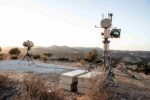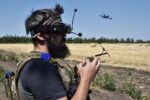Vermeer, a defense-focused startup developing AI-powered visual navigation systems for GPS-denied environments, has closed a $20 million Series A funding round. The company’s technology aims to enable autonomous operation of drones and ground vehicles in contested or degraded environments where GNSS signals are jammed or unavailable—a critical capability for future military operations.
Vermeer’s Mission: Autonomy Without GPS
Founded in 2020 and based in Los Angeles, Vermeer is developing a next-generation navigation stack that leverages computer vision and artificial intelligence to enable autonomous platforms—such as UAVs and UGVs—to localize and move without relying on satellite-based positioning systems. This capability is increasingly vital as adversaries deploy electronic warfare tools capable of jamming or spoofing GNSS signals.
The core of Vermeer’s solution is a proprietary visual-inertial odometry (VIO) engine combined with simultaneous localization and mapping (SLAM) algorithms. These allow platforms to build maps of their surroundings in real time using onboard cameras and inertial measurement units (IMUs), enabling them to navigate even in complex indoor or subterranean environments.
$20 Million Infusion Led by First Spark Ventures
The Series A round was led by First Spark Ventures—a fund co-founded by former Google CEO Eric Schmidt—with participation from existing investors including Lux Capital and Founders Fund. According to TechCrunch reporting from April 2024, the funding will be used to expand Vermeer’s engineering team, accelerate product development, and scale field testing with U.S. government partners.
Eric Schmidt’s involvement underscores growing investor interest in dual-use technologies that bridge commercial innovation with national security applications. Vermeer’s CEO David Levitt stated that the company has already demonstrated its system on multiple autonomous platforms under Department of Defense contracts.
Targeting Military Use Cases in Contested Environments
GPS-denied navigation has become a top priority for the Pentagon as near-peer adversaries such as Russia and China increasingly deploy GNSS jamming/spoofing capabilities across multiple theaters. In Ukraine alone, Russian forces have employed widespread GNSS denial tactics against NATO-supplied drones and precision-guided munitions.
Vermeer’s technology is designed specifically for such contested domains. Potential applications include:
- Small UAVs operating beyond line-of-sight without GNSS
- Autonomous ground vehicles navigating indoors or underground
- Dismounted soldier localization via helmet-mounted vision systems
- Robotic ISR missions in urban combat zones
The startup claims its system can operate effectively even when visual features are sparse—such as dark tunnels or desert terrain—by fusing inertial data with deep-learning-based scene understanding.
DARPA Roots and Defense Validation Pathway
Vermeer’s founding team includes alumni from MIT CSAIL and former DARPA program contributors. The company has participated in early-stage prototyping efforts under the Defense Innovation Unit (DIU) and Small Business Innovation Research (SBIR) programs. It is reportedly working toward integration with DoD autonomy stacks such as the Army’s Robotic Technology Kernel (RTK) and the Air Force’s Autonomy Data & AI Environment (ADAE).
This aligns with broader Pentagon efforts under Project Convergence (Army), ABMS (Air Force), and Replicator Initiative (OSD) to field swarms of autonomous systems capable of operating in denied environments without human control or satellite dependence.
A Crowded but Critical Navigation Tech Landscape
Visual navigation is an active area of MilTech innovation with competitors like Shield AI (Nova series UAVs), Anduril Industries’ Lattice OS stack, Skydio X10D drones, and defense primes integrating SLAM into larger UGV/UAV platforms. However, many existing solutions still rely on intermittent GNSS fixes or require pre-mapped environments.
Vermeer aims to differentiate through real-time adaptability and minimal compute footprint—making it suitable for edge-deployed microdrones or low-SWaP robots operating autonomously at scale. If successful at TRL-7+ validation stages during operational testing with DoD units later this year, Vermeer could secure procurement pathways under OTAs or Rapid Capabilities Offices.










